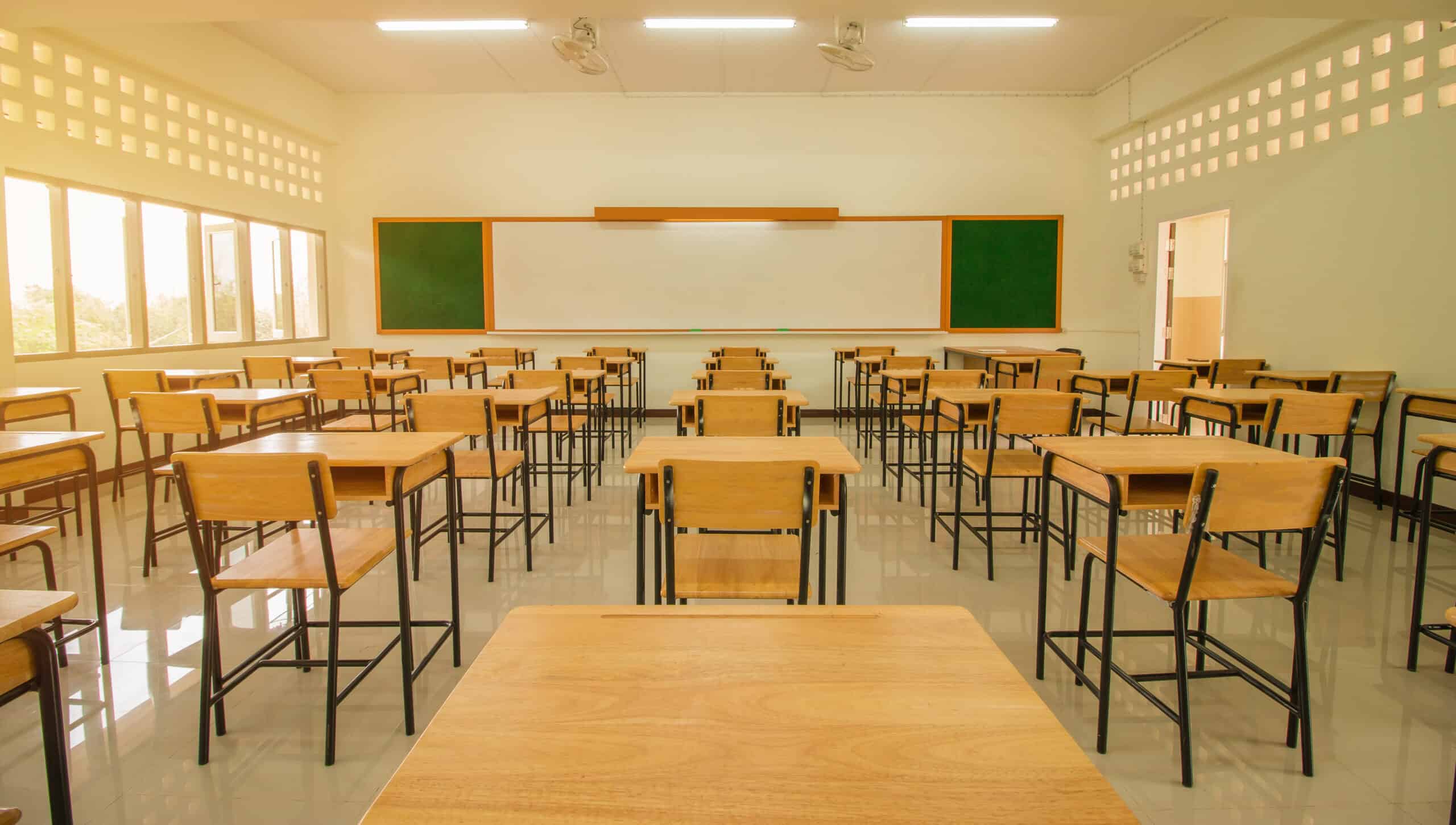Oregon is reputable for high-quality education, and its standards are among the highest in the country. This can be attributed to the many ancient schools transforming lives in the state and beyond. But just how old are the institutions considered the oldest in the state? Our comprehensive review will answer you, shedding light on the rich history of the state's oldest institutions.
St John the Apostle Catholic School
516 5th St, Oregon City, OR 97045
Saint John the Apostle Catholic School, prides itself on a diverse community centered on Christ. The institution is reputable for its robust parent-faculty collaboration center, and staff members are dedicated to preparing the whole child for a lifetime of learning and service. This culture didn't begin yesterday but has come through thanks to years of continual development and growth.
The school's story started in 1844 when a Jesuit missionary called Father DeSmet arrived in Oregon City. The clergyman came alongside six sisters of Notre Dame de Namur, and together, they established the first Catholic school in Oregon, Young Lady's Academy. Unfortunately, times were hard, so the school experienced various closures and re-openings.
In 1883, the institution reopened as St. John's Parochial and High School. This was thanks to the efforts of Father James Rauw and the Sisters of St. Benedict. The move entailed the purchase of a new plot of land on Oregon City's hilltop and the construction of a fireproof school building in 1948.
The Benedictine Sisters operated the school until 1982, when lay individuals took over its administration. As a result, 86 sisters have served the Saint John the Apostle Catholic School. The school continues to serve a holistic education within a diverse and Christ-centered environment.
But this doesn't mean that the school only accepts the denomination its centered around. Rather, Saint John takes in qualified students from all religious, cultural, and economic backgrounds. The school's current population comprises 232 scholars. In addition, the facility employs a dozen classroom tutors, and its student-educator ratio is 17:1.

©Just dance/Shutterstock.com
St. Marys Academy
1112 Cherry Heights Rd, The Dalles, OR 97058
Several years after establishing St John the Apostle Catholic School, the Catholic community came through again, creating the state's second-oldest elementary school, St. Mary's Academy. The founders created the school to further enhance the Catholic Church traditions and Gospel teachings, a move that Cherry Heights residents cherish to date.
Established in August 1864, St. Mary's Academy's rich history begins with the arrival of four Sisters: Sister Assisi, Sister M. Francis, Sister Arsenius, and Sister Agatha. The facility started in a small frame building on Fourth and Lincoln. Originally, one wing was a convent and chapel, and the adjoining two-story structure housed classrooms. About 143 students signed up in its first year.
The facility has experienced tremendous growth throughout its history. But challenges have been part of its growth. The most notable misfortunes are the severe flood of 1884 and the devastating fire in 1891. Nevertheless, it continued to adapt and thrive. Space closure led to the school's closure in 1956. But this marked the beginning of a new elementary school that stands to date.
St. Mary's emphasizes living and teaching the Gospel and the Catholic Church traditions. Equally, the school focuses on individual and communal spirituality, fostering strong relationships, and helping those in need. The school's staff members strive toward academic excellence and envelope the needs of individual learners in developmentally appropriate actions.
The current population at St. Mary's comprises 141 scholars, with 34.8% coming from minority communities. The school also hires 11 classroom tutors, hence a 1:13 teacher-scholar ratio.
Oregon Episcopal School
6300 Sw Nicol Rd, Portland, OR 97223
Oregon Episcopal School is among the institutions reputable for preparing learners for lifelong learning and higher education at a tender age. The school achieves this by inspiring physical, intellectual, emotional, social, spiritual, and artistic growth. As a result, learners who go through this system end up as noteworthy citizens.
The school's culture and dedication date back to St. Helen's Hall in 1869, where the institution served in its early years. It initially served as a girls' day and boarding school, attracting scholars from Oregon, Hawaii, Alaska, Idaho, and Washington. The school's first century was filled with multiple location shifts, but it finally moved to its current location in 1964.
But it was only in 1972 that the facility gained its current status after the merger between St. Helen's Hall and Bishop Dagwell Hall. The result was an all-boys school and was subsequently renamed Oregon Episcopal School (OES).
Oregon Episcopal has since grown tremendously in facilities, faculty members, and staff population. In addition, the school has gained a renowned reputation for its science program, earning accolades in vast prestigious competitions. Examples include the Regeneron Science Talent Search and the Siemens Math, Science, and Technology Competition.
Oregon Episcopal Currently serves 858 scholars, with a 46.2% Minority Enrollment. The facility hires 124 Classroom Teachers, so the student-tutor ratio is a fair 7:1.

©SpeedKingz/Shutterstock.com
Portland Adventist Elementary School
3990 NW 1st Street Gresham, OR 97030
AES, or Portland Adventist Elementary School, was the brainchild of the Seventh-day Adventist Church. The school opened in 1885 and has continuously served the Portland community. The facility sits in its original location, a peaceful eighteen-acre campus in west Gresham.
Portland Adventist Elementary has grown significantly, but its most notable development was in 1974, including a spacious one-story building, a gymnasium, sports fields, a school garden, and a playground.
Despite the tremendous changes, the facility has remained committed to its core mission of being a beacon of light in the community and nurturing the potential of every child. Students at PAES are nurtured to embody Christ's character through their dedication to service, strong work ethic, and readiness to lead in an ever-changing and diverse world.
Another notable legacy of the school is its embracing of students from various faiths and cultural backgrounds. As a result, each learner can integrate Christ and Biblical teachings into their education. This inclusive Christian environment is among the school's greatest strengths, as it seeks to uplift each student as a unique child of God.
The student body is 336, and the school hires 16 classroom tutors.
Lincoln High School
1600 Sw Salmon St, Portland, Oregon
Lincoln High School opens a high school section. The institution was established in 1869 and boasts being the oldest school in the state. As you'd expect, the school has been crucial to the history of Portland, Oregon.
The school's original location is on the second floor of an elementary school. From there, the school has grown to its current stature in the community. Lincoln High currently serves 1,482 scholars, with a population of 53% male and 47% female scholars. The institution has a tutor-learner ratio of 1:20.
As you'd expect of an institution dedicated to high-quality instruction since the 19th century, Lincoln High is the 12th best in Oregon and the Portland metro area. It's also the third-best high school in the city.
Lincoln High School's college readiness index is 40.9/100, and an average of 95% of students graduate each year. Over 32,000 scholars have walked through the school's hallways and graduated, becoming useful members of the society whose skills and talent have enriched Oregon, the country, and the world. Alumni boast records of achievement across diverse fields, from entertainment to sports to the corporate world.

©Monkey Business Images/Shutterstock.com
St Mary's of Medford
816 Black Oak Dr, Medford, OR 97504
St. Mary's of Medford is the second oldest high school on our list. The institution opened in 1865 and was created by three sisters. Its original name was Saint Mary's Academy, and its first graduation was in 1871. The school originated in the mining town of Jacksonville, Oregon.
It first moved in 1908, relocating to Medford before transitioning to a coeducational institution, with the first male graduate in 1930. About 18 years later, the Sisters of the Holy Names transferred ownership to Sacred Heart Parish, which managed it as a coeducational school for the next 13 years.
In 1961, the elementary and high schools separated, leading to the construction of the present high school building on Black Oak Drive. The school faced financial constraints in 1971, forcing it to become an independent Catholic school depending on multiple benefactors. With permission from the Archbishop, St. Mary's added a middle school after a fire damaged Sacred Heart School; they later included sixth grade in 1992.
Starting in 1998, St. Mary's embarked on a capital expansion project, including constructing a library, classrooms, athletic facilities, and a Fine Arts & Athletic Center with a chapel. In 2017, the school underwent significant changes known as “St. Mary's 2.0,” involving the construction of a state-of-the-art STEM center, a cafeteria, and a dormitory for international boarding students. The school also realigned its curriculum, transitioning to an academic module system.
St Mary's of Medford serves 510 scholars, and 33.3% of the populace comes from minority groups. The facility hires 55 accredited classroom teachers with remarkable experience levels, culminating in an impressive quality of education.
Livingstone Adventist Academy
5771 Fruitland Road NE Salem, OR 97317
Oregon has multiple SDA-founded facilities, and Livingstone Adventist Academy is among the most prominent. The Oregon Conference of Seventh-day Adventists runs the school alongside over 30 others. Since 1898 when the school opened, the facility has always envisioned itself as a place of unwavering commitment to God.
Livingstone Adventist Academy was initially near downtown Salem, but later relocated to its present rural location on Fruitland Road. Dr. Livingstone and his African endeavors inspired the facility's name.
Livingstone Adventist Academy has experienced growth at all levels, from new buildings and renovations to curriculum enhancement and a focus on whole student growth. The institution serves 138 scholars with a 44.2% minority enrollment rate. These learners depend on nine classroom teachers, leading to a 15:1 student-teacher ratio.
The facility emphasizes rigorous education, evident in its beyond-expectation performance in statewide examinations and impressive graduation rates. In addition, the teachers and staff remain dedicated to improving the learning environment and school culture.

©Monkey Business Images/Shutterstock.com
Willamette University
900 State Street Salem OR 97301
Willamette University is the first higher learning institution on our list. The school boasts of being the first to open in the West and boasts a rich and complex history dating back to 1834. The facility was the brainchild of Jason Lee, who came to the Oregon Territory to establish a Methodist mission for Native Americans in the Willamette Valley.
The original facility initially cared for orphaned indigenous children, but the missionaries later recognized the advanced societies of the Native American tribes. Later in 1842, it was renamed Willamette University and was vital in establishing law and government in the Oregon Territory. This made it one of the earliest coeducational institutions in the US.
Today, the Bearcats continue to push the frontier of advanced studies, still heeding the vision and mission of the initial residents of the Pacific Northwest. As part of the community's efforts to strengthen its relationships with the Native American tribes throughout the region, the institution strongly emphasizes renewed partnerships.
Willamette University now serves 1,237 undergraduate scholars, and its graduate enrollment stands at 627. About 30% of the populace comes from minority communities, and 76% of classes in the school serve less than 20 scholars. These attributes, alongside its quality education programs, make the institution rank high at the state and national levels.
Willamette ranks 76th in national liberal arts colleges and 88th among the best-value schools in the country. In addition, the institution ranks 70th in the social mobility top performers category and boasts a 67% four-year graduation rate.
Notable Willamette University Alumni
As one of Oregon's oldest colleges, it shouldn't be surprising that Willamette University has a long list of notable alumni. Some of these names include:
- Mark Hatfield, former governor of Oregon and former U.S. Senator
- Alex J. Mandl, former president of AT&T
- Frederick Schwatka, Arctic and northern Canada explorer
- Andy Tillman, pioneer of the U.S. llama industry
- Dick Weisgerber, former player with the Green Bay Packers
- Edward Curtis Wells, former senior vice president of Boeing
- Patricia Price, music producer
- Bob Mionske, Olympic racing cyclist and U.S. National Champion
- Amanda Marshall, former top prosecutor for the state of Oregon
- Paul De Muniz, former Chief Justice of the Oregon Supreme Court and the first Hispanic to hold such a title
Pacific University
2043 College Way, Forest Grove, OR, 97116
Pacific University in Oregon is highly reputable, but it didn't start out like that. Interestingly, the top-ranked facility has traced its origins back to a humble log cabin meeting house in Forest Grove. The Reverend Harvey Clark, a Congregationalist minister, and Tabitha Brown, a former teacher from Massachusetts, took care of and educated orphans who had traveled the Oregon Trail.
In 1863, the facility awarded its first bachelor's degree, but it wasn't until 1911 that it became one of the only three colleges authorized by the state to grant high school teaching certificates. About nine years later, the university had expanded to include five buildings.
In 1968, the school officially adopted the boxer as its mascot, replacing the badger. In addition, the School of Education, now known as the College of Education, was established in 1994, further expanding the university's academic offerings.
Pacific University now stands out among the best institutions in the state and country. The comprehensive university serves over 3,800 scholars under professional, graduate, and undergraduate programs. Instruction programs include optometry, liberal arts and sciences, healthcare, business, and education.
The school's four-year graduation rate stands at 64%, and 61% of classes accommodate under 20 scholars. These are among the greatest attractions for students and families to this reputable facility. In addition, the school ranks 194 among the national universities in the country, 134 among the best value schools, and 132 among the best colleges for veterans.
Notable Pacific University Alumni
As one of Oregon's best colleges, Pacific University has a great list of notable alumni. Names on this list include:
- Tim Hauck, former NFL safety and former safeties coach for the Philadelphia Eagles
- Dick Daniels, former defensive back for the Dallas Cowboys and Chicago Bears
- Augustus C. Kinney, noted tuberculosis expert in the 20th century
- Tela O'Donnell, Olympic wrestler
- Harvey W. Scott, first graduate from Pacific and editor of The Oregonian
- Carol Pott, author who lived in Rwanda during the Rwandan genocide
- Les AuCoin, former U.S. Representative
- Alfred Carlton Gilbert, inventor of the Erector Set
- Robert T. Oliver, authority in the field of communications
- Olaus Murie, conservationist known for his groundbreaking work on large land mammals

©VGstockstudio/Shutterstock.com
Linfield University
900 S.E. Baker Street, McMinnville, OR, 97128
Linfield University is among the most reputable higher learning institutions in the country. It started out as Oregon City College and received its official charter from the Oregon Territorial Legislature in 1858.
Of course, the college faced significant challenges in its early years, but its future was secured in 1922 after Frances Ross Linfield generously donated her properties to the institution. Later on, in 1982, in response to the national trend of integrating nursing education into higher learning institutions, the Good Samaritan Hospital School of Nursing changed its name to Linfield-Good Samaritan School of Nursing, operating under the auspices of Linfield University, a reputable liberal arts college.
Over the years, nurses trained at Good Samaritan Hospital, now Linfield University, have played vital roles in responding to healthcare needs during significant events like the 1906 San Francisco earthquake and both World Wars. The tradition of excellence in nursing education continues to this day, with graduates meeting healthcare demands across the region, country, and beyond.
The school got its current name in 2020. Today, Linfield is an independent nonprofit university. In addition, the institution is nationally recognized for its strong teaching faculty, outstanding science programs, collaborative educational environment, and distinctive international emphasis.
Currently, Linfield University identifies as an independent nonprofit institution serving 1,755 scholars from 12 countries. About 37% of this populace represents first-generation students, and the facility boasts a 55% four-year graduation rate. In addition, 81% of classes at Linfield have less than 20 scholars.
Linfield is nationally recognized for its outstanding science programs, robust faculty, distinctive international emphasis, and collaborative setting. The institution ranks 120 among the national liberal arts colleges and 293 in nursing. It also takes up position 57 among the top performers on social mobility.
Notable Linfield University Alumni
Linfield University boasts a long list of notable alumni. Some of the names on this list include:
- Reid Blackburn, photographer killed while documenting the eruption of Mt. St. Helens
- Jan L. Lee, former member of the Oregon House of Representatives
- Scott David Brosius, former third baseman who won the World Series MVP award in 1998
- Jessica Gill, leading researcher on traumatic brain injuries who was elected to the National Academy of Medicine
- Raemer Schreiber, researcher on the Manhattan Project
- Aparna Brielle, actress
- Laura Gibson, singer and songwriter
- Mark Few, head basketball coach at Gonzaga University
How To Choose the Right Institution
Apart from a school's age, it's also important to heed multiple other considerations when school searching. For instance, consider a culture that aligns with your values, and prioritize schools that are close to your residence. Schools with a low student-tutor ratio are among the most preferred, and it is also important to review the qualifications of teachers.
All these considerations will help you determine which facility guarantees the best learning experience.
The image featured at the top of this post is ©smolaw/Shutterstock.com.

